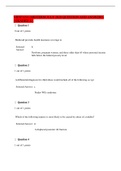College aantekeningen
Lecture notes pharmaceutical biotechnology (BPE34806)
Lecture notes pharmaceutical biotechnology (BPE34806), covering all the lectures given in the course. The lectures include downstream processing and upstream engineering,
[Meer zien]












